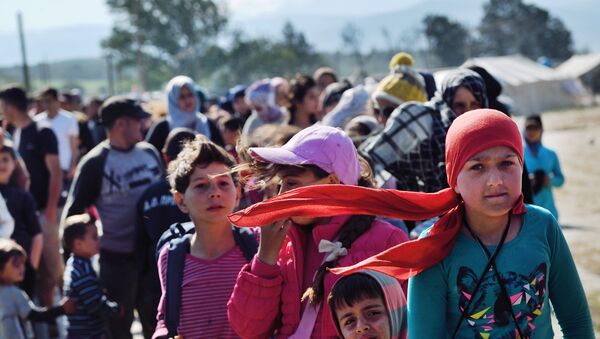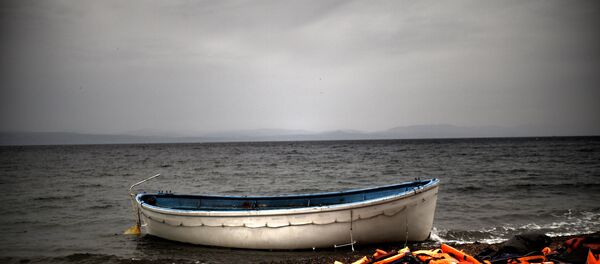Germany found itself at the heart of the European migrant crisis in 2015 after its Chancellor Angela Merkel declared her country's doors open to refugees, which immediately caused more than a million people to leave camps and their homes in Syria, Iraq, Afghanistan and surrounding countries.
Germany also became the second most popular destination for international migrants globally (in absolute numbers), following the United States and ahead of the Russian Federation, with an estimated 12 million foreign-born people living in the country in 2015 (compared to 46.6 million in the US and 11.9 million in the Russian Federation).
In 2015, number of int'l #migrants worldwide was the highest ever recorded at 244 million https://t.co/vKd86Yna0b pic.twitter.com/YTWhhiCCnD
— IOM (@IOM_news) 19 April 2016
According to the IOM Trends Factsheet 2015, by the end of 2015, the EU as a whole received over 1.2 million first-time asylum claims, more than double the number registered in 2015 (563,000), and almost double the levels recorded in 1992 in the then 15 Member States (672,000). The increase in 2015 is largely due to higher numbers of asylum claims from Syrians, Afghans and Iraqis.
Almost 1 in 3 first-time asylum applicants in the EU were minors, an 11 percent increase compared to 2014 levels. Almost 1 in 5 of these were judged to be unaccompanied by national authorities — the highest number since 2008 and a three-fold increase on numbers registered in 2014.
Migrant Tragedies
2015 was also the deadliest year for migrants: increased levels of forced displacement globally were tragically accompanied by record-high numbers of people perishing or going missing while trying to cross international borders. Over 5,400 migrants worldwide are estimated to have died or gone missing in 2015.
According to IOM's Missing Migrants project, migrant fatalities during migration to Europe increased by 15 percent compared to the previous year, reaching at least 3,770. The situation has not improved in 2016, according to IOM researchers who visited Greece on April 19 where staff spoke to some of those awaiting asylum.
A man named Mohamed, from Ethiopia, told IOM staff that he was traveling with his family:
"I saw my wife and my two-month old child die at sea, together with my brother-in-law. The boat was going down… down… all the people died in a matter of minutes. After the shipwreck we drifted at sea for a few days, without food, without anything, I think (sic) I was going to die. When we were rescued we were told them that we wanted to go to Italy, but we have been brought to Greece."
"The testimonies we gathered are heartbreaking. We await further investigations by authorities to better understand what actually happened and find hopefully evidence against criminal smugglers," said IOM Athens Chief of Mission Daniel Esdras.
From 2014 to 2015, a major and sudden shift in routes of irregular migration by sea to Europe occurred. About 853,000 migrants arrived in Greece in 2015, compared to 34,400 in 2014. Almost 154,000 arrived in Italy in 2015, compared to 170,100 in 2014.
“The boat was going down, people died in a matter of minutes"- a shipwreck survivor told us https://t.co/4Yn7kWjVYr pic.twitter.com/zBYhLbDKY0
— IOM (@IOM_news) 21 April 2016
In 2015, the number of voluntary returns of migrants (including failed asylum seekers and others) from EU countries was for the first time higher than the number of forced returns (81,681 compared to 72,473). The number of IOM-assisted voluntary returns from EU Member States, Norway and Switzerland in 2015 reached almost 56,000.



